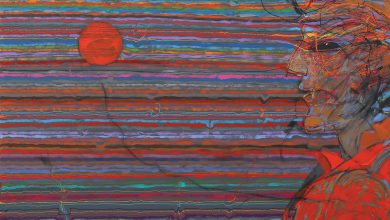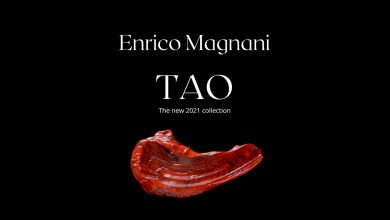
The scanty historical information available on Jan Jakub Komárek, also known as the “Bohemian”: a printer, typographer and publisher, who lived in Rome between the seventeenth and eighteenth century, is due to the research work carried out by Professor Stanislav Bohadlo, from the University of Hradec Králové, who was able to reconstruct part of his journey through history. Despite the fact that he had fallen almost completely into oblivion as an important figure, Jan Jakub Komárek “The Bohemian” played an important role in the history of relations and cultural influences between Italy and Bohemia. If Czech Lands, and Prague in particular, had been the destination of many Italian citizens since the second half of the sixteenth century – mainly from the North of the Peninsula – there were also reverse flows, even if such numbers were certainly not comparable to the former.
Jan Jakub Komárek was born in Hradec Kralove in 1648, a year that saw the end of the Thirty Years War, the most disastrous war conflilct to have involved central Europe, that had extemely negative consequences, both in terms of social and demographic changes, political as well as cultural, giving rise to what was defined as the “Seventeenth Century Crisis”.
Jan Jakub was born into a family from Northern Bohemia, but of his childhood and life in that region, prior to his transfer to Rome, nothing is known for lack of documentation. At an early age, he took up the job of printer, publisher and type-founder, a job that allowed him to get to know the cultural elite of that period and enable him to exert a certain influence on the Italian high society of that period. His experience as a printer and publisher, partly reflects the political, religious relations and cultural background of that particular historical moment, and has afforded a valuable picture on the cultural interests and circulation of ideas that were taking place in Rome in the seventeenth and eighteenth centuries.
Between 1669 and 1672, Jan Jakub Komárek moved to Rome and found a job as a technician at the papal printworks of the Congregation de Propaganda Fide, an institution founded in 1622 to combat Protestantism. The Congregation de Propaganda Fide was responsible for the organization of Catholic missions to territories, especially in China, in order to spread the doctrinal tenets of Catholicism, by means of religious publications written in Oriental languages.
The fundamental reason why Komárek was admitted to this important printing works was no doubt due to his friendship with Zacharias Dominik Aksamitek, a Bohemian and Prague citizen, who since 1661was in charge of the printing works that was responsible for printing books for the missionaries.
Komárek lived with him since 1678 in the Nazarene College, an institution that had been founded by St. Giuseppe Calasanzio in 1630. He married Lavinia Natalini from Rome, who was to have an important role in running the printing works.
Between 1678 and 1695, nine children were born into the printer’s family, including Paul, who directed the printing works for a certain time until his death in 1715.
The social and professional profile of Giovanni Giacomo, the name with which he became known in the capital, may be deduced from the godfathers of his children, which include among others: the draftsman and engraver Pietro Aquila; the most important cardinal, Odoardo Cybo; the historian, archaeologist and physicist Giovanni Giustino Ciampini, Maria Josefa de Martinic, bride of the imperial ambassador at the Holy See, and others, including his printed works, achieved mainly for Cardinals Pamphili and Ottoboni, their protàgè and also for musicians Arcangelo Corelli and Scarlatti.
The first publication to quote the name of Komárek’s undertaking is the “Epistola ad eminentissimum principem Franciscum Barberinum SRE Cardinalem Vicecancellarium … “, dated 1676 and written by the abbot Alessandro Scarlatti.
The years between 1693 and 1701 – as Bohadlo has pointed out – mark Komárek’s peak production both in terms of quantity and importance of his book production. In that period, the printing works and other workshops that the Bohemian had opened, reached their maximum level of production, with an average of 18 titles a year among books and printed musical works. The printed works of that period include : “Ragionamento sopra il rispetto dovuto alle persone costituite in dignità detto dall’ab. Ferdinando Maria Nicolis alla presenza di porporati, prelati, ed altri nobili …”, printed in 1698 in his printworks at “La Fontana di Trevi”; i ” Nuovi ritrovamenti: nella quale si favella: 1. De gli occhiali atti ad ogni vista, 2. Delle mole, che macinano mediante la corrente dell’acque…”, by Meijer Cornelis in 1689, in the Printworks “all’Angelo Custode”; l’ “Arte di elegger l’ottimo, osseruata nelle meditazioni proposte nella seconda settimana degli esercizi spirituali di Santo Ignazio di Loiola. Dal padre Gioseppe Agnelli della Compagnia di Giesu” of 1689. Between 1687 and 1696, the “Bohemian” printed 148 works, including thirteen booklets on Roman orators, printed at the printing works “All’Angelo Custode” – which moved later just opposite the Fontana di Trevi. Another oratorial of 1689: “The martyrdom of St. Eustace”, which was also printed by Komárek, is the work of Crateo Pradelini, an anagram of ” Cardinal Pietro” Ottoboni, the nephew of Alexander VIII. Besides the cardinals and papal court, Komárek worked on a commission basis for many nobles and even for the famous Arcadia Academy. However, as well as musical and religious pieces, the printing works of Giovanni Giacomo also printed many scientific books. All the editions of his books were of great value because they were finished with artistic engravings and decorative architectural motifs. His most important achievement is the set of 15 printed works of the trio sonatas by the Corelli Circle, which goes back to the years between 1689 and 1706. The intense and extraordinary activity of the publisher, printer and bookseller, led Komárek and his printing works to play an influential role in the cultural life of the time until the mid-eighteenth century when, after his death in Rome in 1706, his heirs continued his activity. As Prof. Bohadlo has pointed out: “The extent of Komárek’s influence on the political events of Europe, takes place after 1696, when his printing activity is converted into a political instrument and Komárek finds himself at the centre of attention on the part of the Holy See and the Imperial Court – ending up in prison in 1703”.
Through their work, Komárek’s descendants contributed to the propagation of the fame and international prestige of Czech St. Giovanni Nepomuceno. Even today, the works that had been made in his printing works: at “all’Angelo Custode” and at “La Fontana di Trevi”, are still in circulation and are greatly appreciated as antique books, mainly due to the their important role in spreading scientific ideas, music and art of that period. Even their economic value has multiplied during more than 300 years since the death of Komárek. After his death, the printing works of the Bohemian continued to maintain his name and worked on for decades, at least until 1770.




